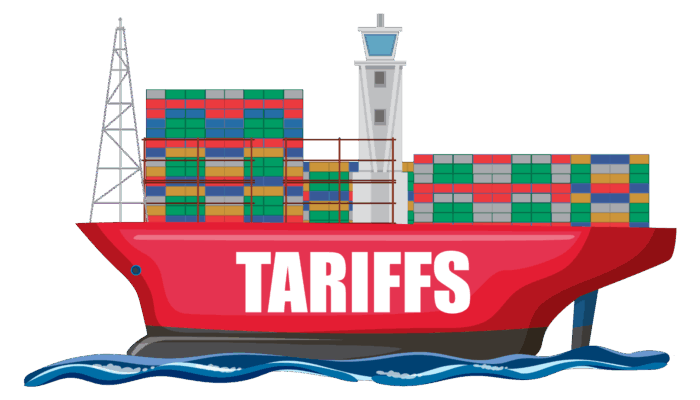We’ve all seen the recent headlines. There’s a surplus of inventory. Warehouses are filled to the brim with stock. Simply put, many retailers are facing the same problem—too much inventory and nowhere to put it. How did we get here? And what are some ways to solve these issues, before it becomes truly unmanageable?
Stocking up—then getting stuck
The pandemic brought many shifts to our everyday lives, but it also created a never-before-seen demand for certain products. Lack of travel—and for some, more money to spend than usual, meant that consumers startedto stock up on purchases. New TVs, furniture, kitchen goods, smaller electronics like air fryers. Meanwhile, supply chains were disrupted. Delays and out of stocks were common. So there was a big push to stock up on these goods to hedge against supply chain disruption.
But then the effects of the pandemic began to wane. Travel opened back up. Offices began to reopen. Events started to fill calendars. And this meant that consumers’ extra dollars were rerouted to experiences and services—and demand started to change.
Yet retailers already had product in stock. And not all of it had hit the digital and physical shelves yet—which left them stuck with tons of unsold items on hand.
The holiday season is looming
Thanks to all this extra inventory, retailers now carry the burden of too much stock. That isn’t moving fast enough. And with peak season just around the corner, they need to clear it out. How?
One way is liquidators. Another is markdowns. The question is, if you have to mark stock down, how do you maximize the margin on each order? How do you extract as much value as possible? Let’s look at three ways.
1. Use smart sourcing logic
While commerce platforms and ERPs may let you split shipments, they lack the ‘brain’ of a distributed order management system. They can’t support tiered sourcing logic that helps you increase margins. Like what? Imagine if you could use rules like ship from the location with:
- Most inventory
- Oldest inventory
- Lowest sell-through rate
- Highest in-store markdown
And layer them on top of standard sourcing logic like:
- Closest location to the customer (to reduce delivery costs/fastest delivery)
- All items in stock, to reduce split shipments
- Number of open orders (for capacity management)
By fulfilling online orders from strategic locations, you can help keep margins higher. This strategy works for seasonal markdowns, too. Stores may have markdowns available in their specific locations, but when you fulfill online orders from store stock, you can sell these marked-down products to customers in any location.
2. Manage inventory availability
What’s more, a distributed order management system gives you more control over stock availability. For example, you might want to set buffer or safety stock levels at the SKU-Location level. Why?
Because you might want to:
- Prevent canceled orders on popular, high velocity items
- Make more stock available to the online channel at stores where inventory is moving slowly
- Protect the in-store experience at your flagship stores
With consumer preferences changing rapidly, it’s harder than ever to accurately forecast demand. But with a distributed order management system you can get more control over your sourcing logic and inventory availability, which ultimately means higher margins on every order. But not all systems are created equal.
For optimal inventory and order management, you need a powerful platform that can support:
- Real-time inventory updates at scale
- Advanced sourcing strategies so you can optimize fulfillment
- In-store tools your employees need to ensure an efficient pick / pack process
- Flexibility, so you can choose which stores to ship from and when—plus control which items can be shipped from where
- Capacity management, such as limiting the total orders per day by store, or cap the number of open orders per day
An order management system can also help you sell in more channels.
3. Expand your sales channels
Marketplaces can be another way to shed excess inventory. But what if you only want to sell some of your products via these additional channels?
Use Virtual Inventory to your advantage
What is virtual inventory? Virtual inventory allows you to control what is sold in each channel or region—virtually. You can create virtual pools of inventory that can be segmented in many ways—including by channel, market, region, and/or product—and include inventory rules such as buffers or exclusions.
Virtual inventory can also help prevent in-store customers from experiencing out of stocks. You can isolate a portion of your inventory for online orders only, and reserve the rest for in-store traffic. Or you can take the opposite approach, and aggregate all stock—including store stock—and make it available to sell online to reduce stockouts.
Flexibility is key in this current market. When you have the ability to quickly respond to behaviors and change what’s Available to Sell in each channel, market or region, you can better prevent stockouts from occurring.
Summary
Don’t let the recent news scare you. You can take steps now to solve your inventory issues with a powerful, flexible order management system. Fluent Order Management allows you to deploy fast, scale as needed, and be truly flexible thanks to the cloud-native platform ready to adapt to change.
With Fluent Order Management, you can confidently tackle the ups and downs of the current market—now and in the future. To learn more, schedule a demo today.



